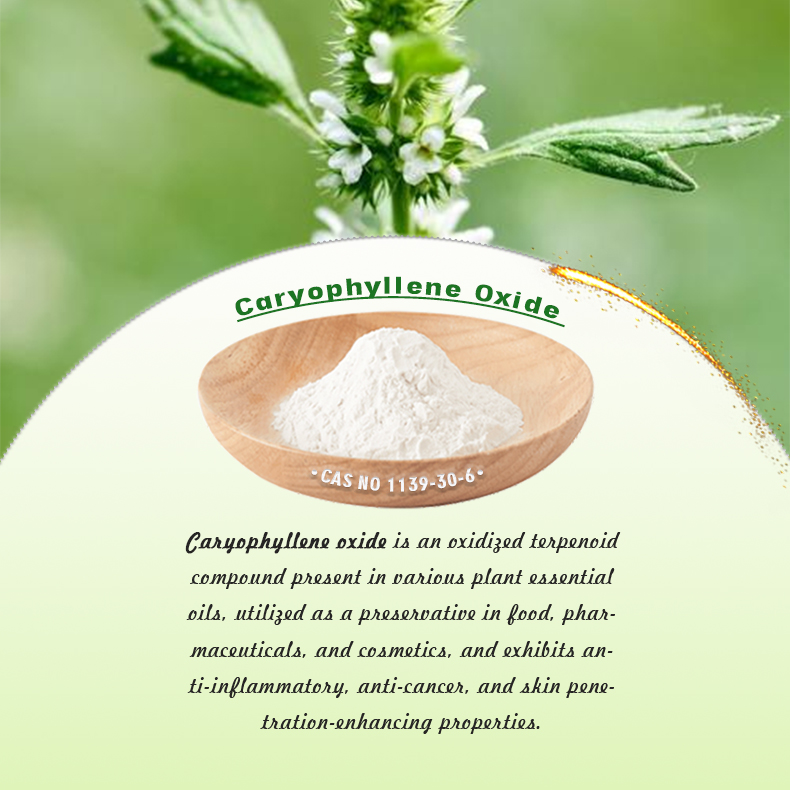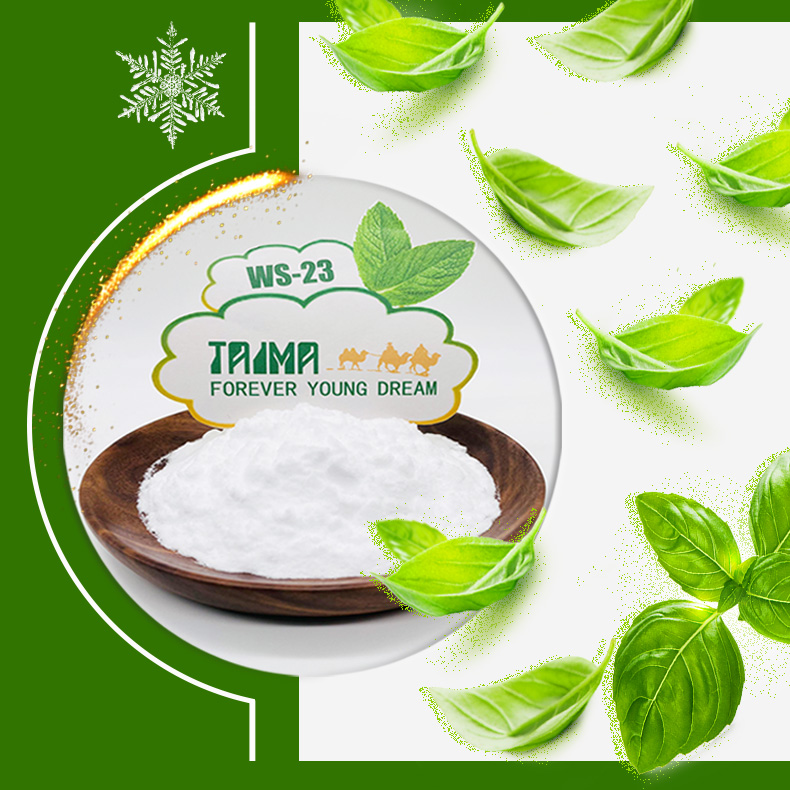
Taima caryophyllene oxide cas: 1139-30-6
Powder caryophyllene oxide for skin-care
Caryophyllene oxide (CO) is a biologically active monoterpenoid with the molecular formula C₁₅H₂₄O. It has been shown to play a significant role in regulating wild animal behavior. Studies have shown that giant pandas, exposed to fresh horse manure containing CO, acquire this compound, which reduces temperature perception in cold environments. Chemically, it exhibits optical rotation ([α]₂O/D −70°) and a specific melting point (62-63°C), making it widely used in the fragrance industry and pharmaceutical research. Studies have demonstrated synergistic analgesic and antibacterial activities (particularly against Klebsiella pneumoniae), as well as potential antiparasitic properties. Microbial transformation experiments have also revealed that its derivatives exhibit cholinesterase inhibitory activity.
Caryophyllene oxide for healthy products
- This is the 1st item
- This is the 2nd item
Empirical formula (Hill method): C₁₅H₂₄O
CAS No.: 1139-30-6
Molecular weight: 220.35
FEMA No.: 4085
Beilstein No.: 148213
EC No.: 214-519-7
MDL No.: MFCD00134216
UNSPSC No.: 12164502
PubChem Chemical Substance No.: 24902045
Flavis No.: 16.043
NACRES: NA.21
Agency: follows IFRA guidelines
application of caryophyllene oxide
Antibacterial Effects
Caryophyllene oxide accounts for 12.7% of the volatile oil from juniper leaves extracted using supercritical CO2 extraction. In vitro antibacterial studies showed that concentrations ≥0.8 mg/mL showed an inhibition rate of 78.3% against Klebsiella pneumoniae. This activity is related to the effect of the epoxidized structure in the molecule on bacterial cell membrane permeability.
Pharmacological Applications
When combined with acetaminophen, caryophyllene oxide enhanced analgesia by 32% and reduced the incidence of gastric mucosal lesions (P). This synergistic mechanism involves regulation of the TRPV1 receptor pathway. A 2006 microbial transformation study confirmed that Chaetomium globosum can convert (−)-caryophyllene oxide into four derivatives, including 6β-hydroxycaryophyllene. Compound C exhibited a half-maximal inhibitory concentration (IC50) of 18.7 μM for butyrylcholinesterase.
Applications of Caryophyllene Oxide
| Aromatherapy/Fragrances: | * Used in perfumes and cosmetics for its earthy, spicy scent. * Common in natural deodorants and incense. |
| Pharmaceutical/Nutraceutical Research: | * Studied for potential anti-inflammatory, antioxidant effects. * May interact with the endocannabinoid system (CB2 receptor modulation). |
| Food/Beverage: | * Flavoring agent in spices and herbal products. |
| Ice serise flavor | * A major oxidation product of β-caryophyllene (a cannabis terpene), used in analytical standards. |
Food flavor package
1.Shipment:
Door to Door service by FedEx/TNT/DHL;
2.payment method:
PayPal, T/T, W/U; Alibaba; Bank transfer...
3.Time delivery:
3 days after we gentting payment ;
4.Packing:
First,Fluorinated bottles/bags first;
Next packed by Chunky Aluminium foil bag;
Then in carton box;



